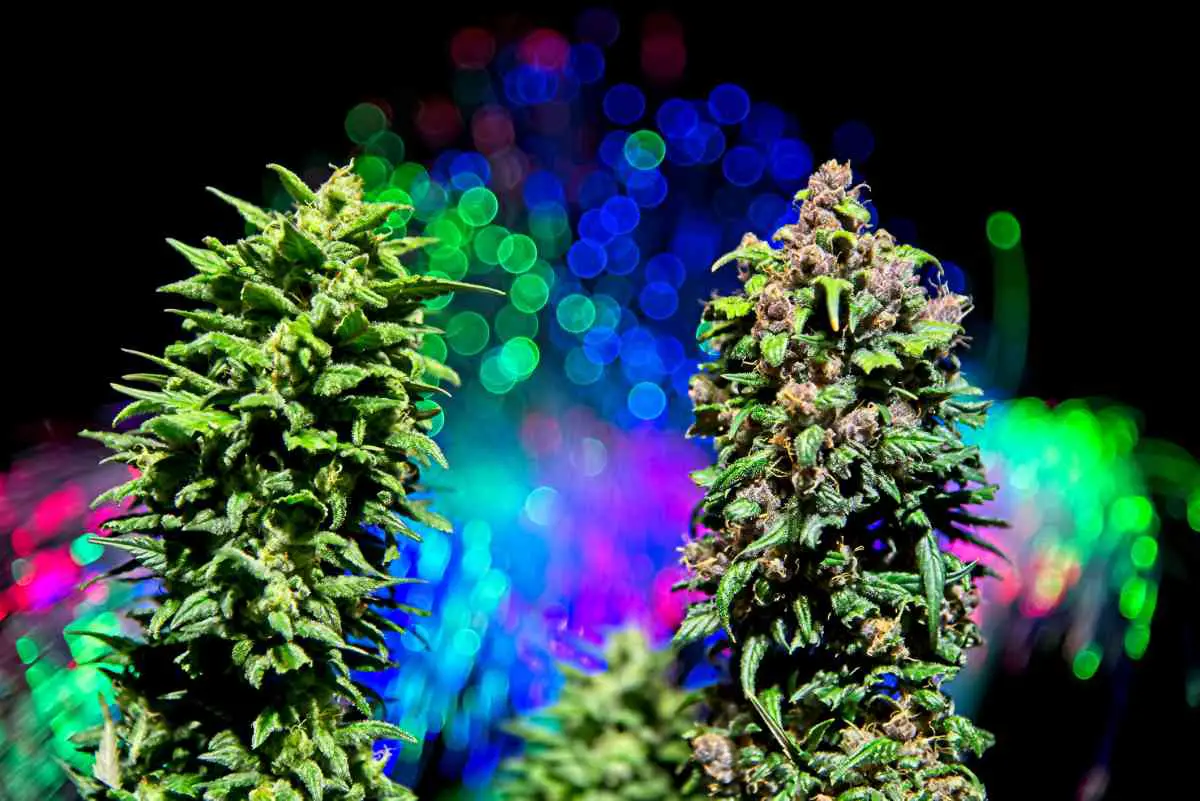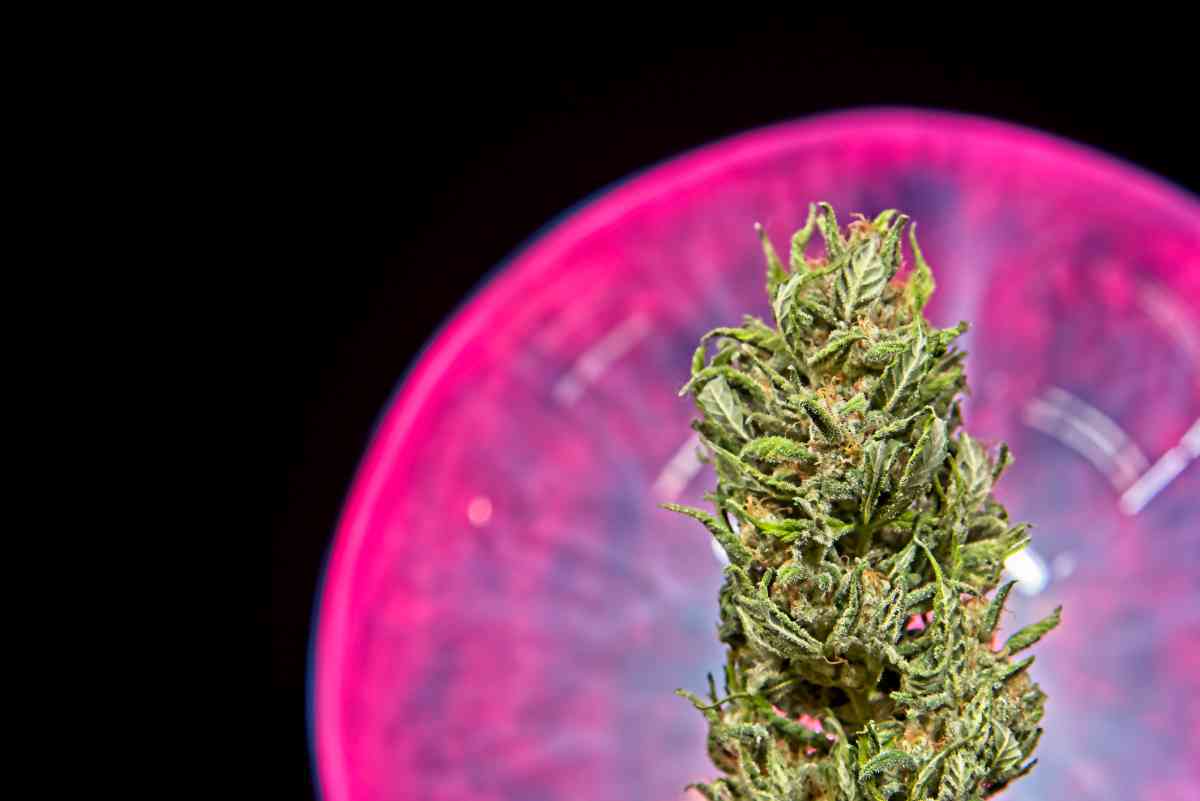Light is an essential growth and development resource for your cannabis plants. From the seedling stage to harvesting, the plant will need different hours of exposure to light.
The buds need access to the light to fatten up and enrich the cannabinoids, terpenes, and the flavonoids.
Inadequate lighting at the last phases of the flowering stage can reduce your yield considerably. However, exposure to intense lights can also evaporate the trichomes that bear all the goodness you cultivate the plant for.
Do Buds Need Direct Light?
The buds have chlorophyll-filled chloroplasts hence need direct light to enhance photosynthesis. The leaves that cover the buds too need direct light to give the plant the energy it needs for the last round of bud development.
These leaves have a smaller surface than the fan leaves, but they’re last to dry, thus a reserve for last stages of buds’ growth.
The last stages of the plant’s growth is normally marred by quick hormonal changes that are as stressful to the plant as they’re energy-hungry.
The plant is drifting to senescence but still has to wean the buds to the required taste and aroma. Growers who grow for CBD know it takes late harvesting to get the most CBD-rich nugs.
The plant will need to utilize every green, photosynthesizing surface to generate this needed energy for prolonged flowering. And the buds have the chlorophyll-filled chloroplasts to break down light, C02, and the nutrients into sugars and oxygen.
The sugars nourish the buds through their development while the plant gives out the oxygen as a byproduct of photosynthesis.
Basic science.
The buds are rich in chlorophyll that after harvesting you have to dry and cure them to expel the chlorophyll. Perhaps, it is the need for light at the bud sites that make defoliation necessary before the plant enters the flowering stage.
Though defoliation works by reducing the parts of the plant it feeds, and challenging this energy to bud production, it works majorly because it exposes the plants to direct light.

What Is Considered Direct Sunlight?
A light source is considered direct when there is no obstruction between the light and the plant, the distance between them is short for intensity, and when the plant stands against the light’s rays.
In essence, three things will determine if the light is considered direct light. These are; distance, intensity, and direction of the light.
If you rely on the sunlight, direct sunlight is when your plant stands unobstructed. It can thus receive light from different angles, at the right intensity.
Other plants, especially succulents can do well when planted close to the window. But cannabis plants require more intense light for proper growth and development.
The best way to grow your cannabis plants is to either grow them outside with the natural light or use powerful grow lights to mimic sunlight indoors.
The sunlight sipping through a giant window to the plant is considered direct light. However, it won’t be enough to grow cannabis on because as the sun moves, the plant will only catch a bit of it. Too little for the required hours of exposure at different stages of growth.
The need for the right light of intensity is partly the reason why outdoor growers observe strict seasons for growing cannabis. The plants vegetate when they have longer exposure to sunlight, and begin to flourish when the days become shorter.
For most regions, having the plans in the seedling stage by Summer solstice in June and harvesting during Fall make the most sense as the plants has adequate exposure to light.
Is A Grow Light Considered Direct Sunlight?
Grow lights can provide conditions that are almost similar to the direct sunlight outdoors. However, grow lights provide different wavelengths from the sunlight.
While sunlight produces red and blue wavelengths, most grow lights produce only green and yellow lights, denying the plant enough light for growth.
Luckily, cannabis plants can do well with full-spectrum grow lights.
The outside sunlight can have no equal as it provides the natural light at the right intensity throughout the plant’s growth. It also doesn’t pose extreme temperatures that high pressure grow lights are known for.
The downside to the outdoor sunlight is that you have absolutely no control over its intensity. If the weather gets cloudy a few days of the week, your plants might get little light that doesn’t penetrate through the canopy.
Grow lights, on the other hand, give you more control as you can increase the light intensity by placing them closer to the plant’s canopy.
But when you invest in the right LED grow lights, you can tweak the wavelengths for each growth stage and create the perfect lighting conditions for your weed plants to blossom indoors.
Using grow lights indoors also give you the freedom to influence the plants growth and development.
Most lights come with veg and bloom switches, allowing you to initiate flowering when you deem fit and control the duration of your grow project.
How Do You Know If Your Plant Is Getting Too Much Light?
Too much light, or light burn as it is known among growers is a common problem that newbie growers grapple with.
Light is an essential resource for the growth and development of cannabis plants. However, the plants can only take in a certain amount and intensity of light.
In most cases, light burn will be caused by grow lights being too close to the plant’s canopy.
The hours of exposure might be well-timed, but if the lights are held closer to the plant, the intensity overwhelms the plant.
If you notice the top leaves (the closest leaves to the light) turning yellow, it is time to suspend the lights a little higher to reduce the burn.
The leaves experiencing the burn will also show unhealthy paleness than the other leaves.
The Difference Between Light Burn and Nitrogen Deficiency
The plant suffering light burn will have its leaves curling upwards as if praying to the sky. The leaves will progress to turning yellow, much like nitrogen deficiency, but they won’t fall on their own as normally happens with nitrogen deficient plants.
Light burnt leaves might seem ravaged, given the degree of yellowing, but they will still hold to the stalk firmly. Thus, hard to pluck. Unlike leaves yellowing from nitrogen deficiency that fall on their own.
For light burn, the yellowing happens after prolonged light stress, and though they might hold firm, it takes longer to heal the leaves. Some leaves might not recover fully before the plant senesces.
Another way to differentiate light burn from nitrogen deficiency is watching where the leaves are hurting.
For nitrogen deficiency, the leaves will begin yellowing from the lower part of the plant, while for light burn, the top leaves always bear the brunt of the light burn.
The tell-tale signs that announce the arrival of light burn is the leaves curling upwards. If you diagnose light burn at this stage, adjusting the lights farther from the canopy can undo the harm.
In summary, buds need direct sunlight to blossom and be cannabinoid-rich. Other plants’ might not use their flowers to synthesize, but that’s because not all flowers are green.
Buds are rich in chlorophyll hence need direct sunlight to break down energy for the bud’s development.

